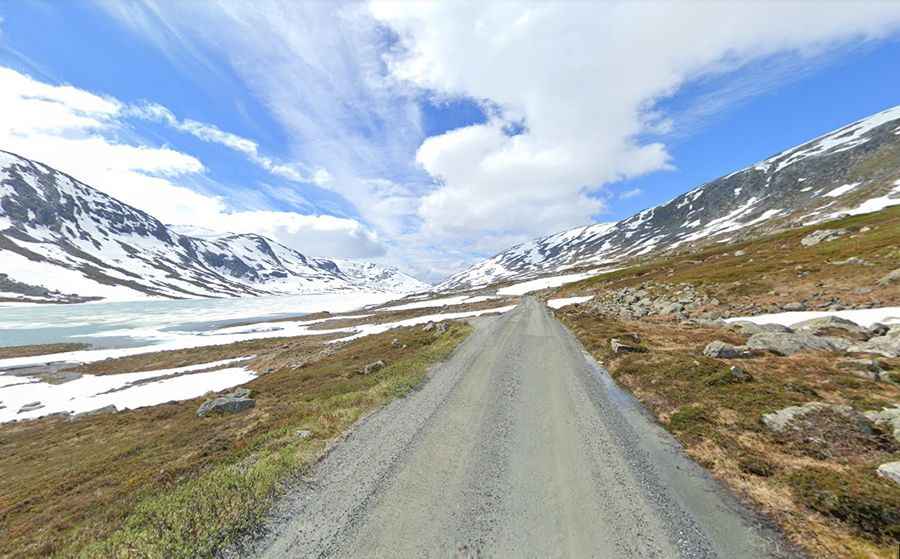Gamle Strynefjellsvegen is a scenic drive in Norway
The stunning Norwegian Scenic Route Gamle Strynefjellsvegen (Old Strynefjell Mountain Road) is a throwback to late 19th-century engineering. It’s one of the most famous scenic drives in Norway.

Where is Gamle Strynefjellsvegen?
Straddling Innlandet and Vestland counties, the road is located in the western part of the country.
How long is Gamle Strynefjellsvegen?
The road, officially designated as Norwegian County Road 258 (Fv258), is 27 km (16.77 miles) long, running west-east from Videseter (in Vestland county) to Grotli (in Innlandet county). It is a National Tourist Route.
Is Gamle Strynefjellsvegen paved?
The road is mostly unpaved. It starts as a paved road for the initial 10 km, but the last 17 km are unpaved. The road surface changes at the border between Vestland and Innlandet counties, marked with a stone, near Langvatnet lake. The gravel is rideable when dry but becomes difficult and "slimy" when wet. If traveling from west to east, it is advisable to decide at the ski station just to the west of the changeover.
Is Gamle Strynefjellsvegen challenging?
In places, this stretch is narrow—only about 3.5–4.5 meters (11–15 ft)—with a number of bends and restrictions. Vehicles that are more than 8 meters long and have an axle load of more than 8 tons are banned from driving on Gamle Strynefjellsvegen from Grotli to the Sogn og Fjordane county boundary.
Is Strynefjellsvegen open?
Leading through the mountains and topping out at 1,139m (3,736ft) above sea level, this road is usually closed in winters. It normally opens in June and closes in late autumn, depending on the amount of snow in the mountains. At Tystigen, it is still possible to ski far into the summer. Otherwise, high summer and autumn is the time for walking in the mountains. The road is also excellent for cycling. Right up until the 1950s, snowplowing the road was manual labor. Two hundred men with spades dug their way through miles of several-meter-high snow banks, but that is history now. These days the snowplows clear the road in a matter of days.
When was Gamle Strynefjellsvegen built?
The road was opened to traffic in 1894. Built by manual labor, it has a long history. Between Skjåk and Stryn, there were several ancient routes for the transport of people and essential goods. It was a strenuous and slow journey, but in 1881, a road was built between Grotli and Hjelle. Swedish navvies and local people from both sides of the mountains took part in the hard work of construction. In 1894, the 27-kilometer long road was ready for use, a masterpiece of road building and engineering. In 1978, the road was bypassed by a new 12-kilometer long road (Rv15) with three tunnels that remains open all year round.
Is Gamle Strynefjellsvegen worth it?
The drive is very scenic and features stunning views, running along the northern shore of Langvatnet and Heillstuguvatnet lakes. The road is a museum experience in itself. The Tystigbreen glacier lies just south of the road. Nature displays its contrasts along this stretch of road, with the rounded, glacier-scoured forms to the east and a steeper, more precipitous topography to the west.